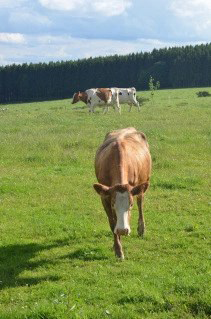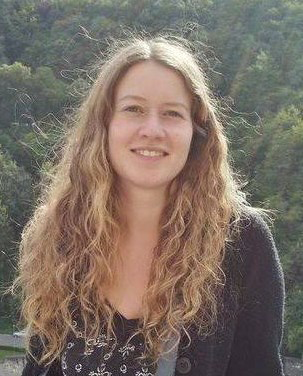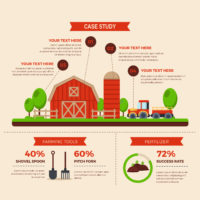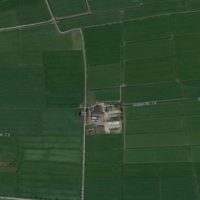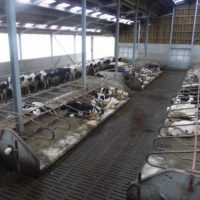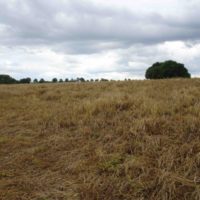Description
For 8 years, the farm practices short grass grazing, a technique which aims to keep the grass short (about 6-7 cm high) throughout the growing season. The size of the available grazing surface is continuously adjusted so that the daily consumption of the cows equals the growth of the grass in the meadow.
The grass adapts itself to these pasture conditions. The grass is denser, and leaves no room for the development of weeds. Rumex, for example, can not bear to be grazed repeatedly and dies out. On the other hand, these conditions ensure the growth of English rye grass and white clover which benefits from additional light and can enriche the pasture with nitrogen.
Thus, short grass grazing provides very digestible protein-rich grass. The low height of the grass imposes intensive grazing, increasing the salivation, which prevents acidosis problems.
To optimize even further the use of the pasture, the Theissen family chose to breed their cattle towards the Kiwi-Cross breed and to organize the calving of the cows seasonally. The Kiwi-Cross breed from New-Zeeland is better adapted to grazing, and the seasonal calving enables the cows to have the best grass at the peak of their lactation. If the technique of continuous short grass grazing is not applicable to all farms, it can nevertheless lead to a reflection on the optimal valorization of the grass, which is an ideal food in terms of nutritional quality and economy for the farm.
More autonomy, more efficiency, less costs, less work, better quality, and better revenue.
To implement this innovation, you need first and foremost enough grazing surface. The Theissen family have 40 ha in direct proximity of the farm that provide the necessary surface for a pasture based production. The 40 hectares of pasture are divided into two plots, one for the day and one for the night.
Farm description
Environment
- Belgium Haute Ardenne region
- Clayey-loam soil
- Temperate oceanic climate
- Altitude: 540 m
- Average slope: 7 %
- Vegetation: Ryegrass, white clover, orchadgrass, timothy, dandelion
Grassland management
- Grazing management type: Short grass grazing
Structure
- Annual Work Unit: 3
- Specialist organic milk production with around 100 milking cows
- Brown Swiss, Jersey, Montbéliard, Kiwi-Cross breeds
- Total Livestock unit: 146
- Agricultural Area: 112 ha UAA
- 100% permanent grassland area
Animal performance
- Average of 5200 L/cow/year
- 350 kg concentrates/cow/year
- Average lifetime of the cows on the farm: 6.5 years
- Average calving/cow: 4
Why it is working
First, the most important condition for short grass grazing is to have enough available grazing surfaces around the farm. It should be possible to make 2 big plots with at least 0.15 ha per cow each. There is not really a need for over sawing the pasture. The vegetation adapts itself to this grazing type. There is not much to do besides adjusting the size of the pasture to the growth rate of the grass.
The breeding of the herd towards a more adapted breed to grazing as well as the seasonal calving are both options that enhance even more the productivity of the grassland.
